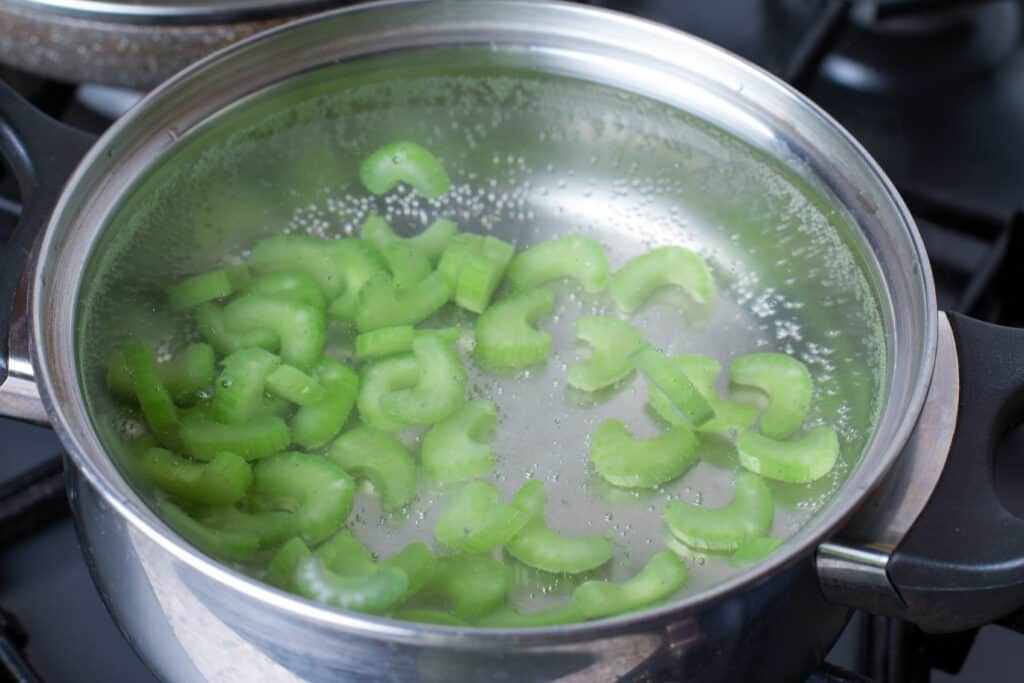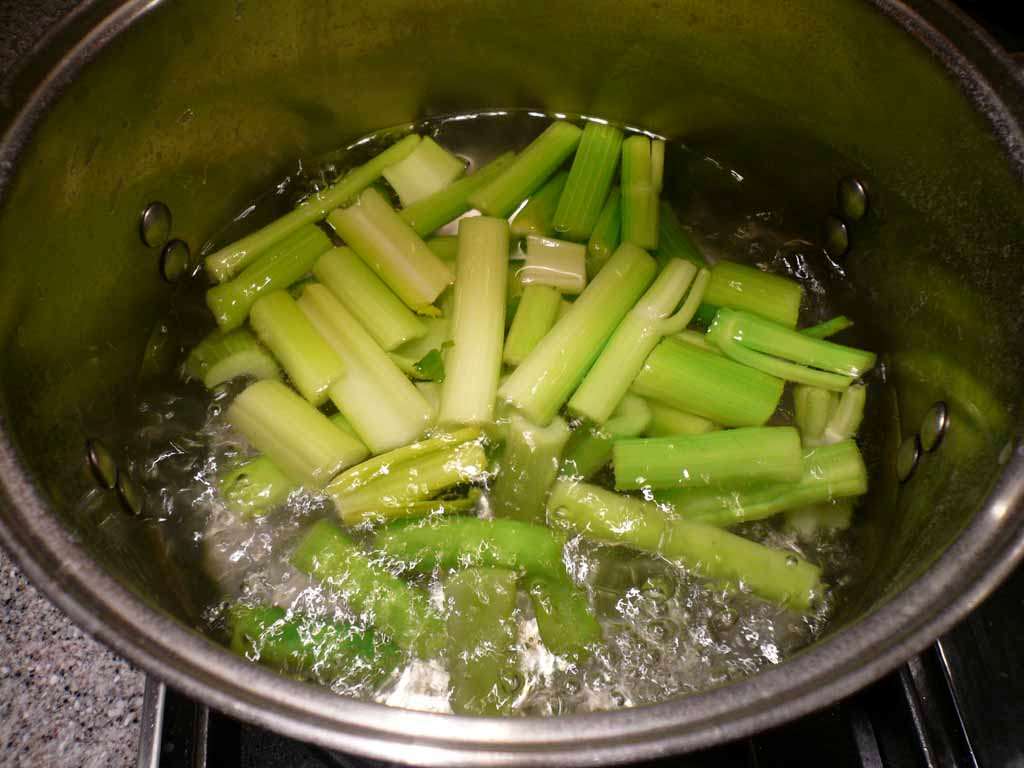
03 May The Art of Boiling Celery: A Comprehensive Guide
Celery, with its crisp texture and refreshing flavor, is a versatile vegetable used in a multitude of dishes. While it’s often enjoyed raw, boiling or cooking celery can transform its texture and soften its sometimes-stringy nature. If you’re wondering how to master the perfect boil, this article is for you. We’ll cover everything you need to know about celery boiling time, along with essential tips for enhancing your experience.
Understanding Celery’s Texture
Before we dive into boiling times, let’s understand the basics of celery’s texture. Celery comprises long stalks containing stringy fibers. The outer stalks tend to be tougher, while the inner stalks are generally more tender. This difference in texture can subtly influence boiling times.

Preparation: Key to Optimal Boiling
- Wash and Trim: Start by rinsing the celery stalks thoroughly under cold water to remove any dirt or debris. Trim off the root end and any discolored or wilted leaves.
- Customize Your Cut: Decide how you plan to use your celery:
- Diced or Chopped: Cut the stalks into small, even pieces for soups, stews, or stir-fries.
- Sticks: For snacks or side dishes, simply cut the stalks into the desired lengths.
- Whole Stalks: In some recipes, you may want to keep the stalks intact.
The Boiling Process
- Choose Your Pot: Select a pot large enough to comfortably accommodate your celery without overcrowding.
- Salt Your Water: Generously salt your water before bringing it to a boil. This helps season the celery and enhances its flavor.
- Add Your Celery: Once the water reaches a rolling boil, gently add your prepared celery.
- The Perfect Boil: Here’s a general timeframe guide, but remember texture is your best indicator of doneness:
- Tender-Crisp: Ideal for salads or stir-fries: 3 – 5 minutes.
- Tender: Excellent for soups, stews, or as a simple side dish: 10 – 15 minutes.
- Very Soft: If your recipe calls for extremely soft celery, boil for longer than 15 minutes, but be aware of potential loss of flavor and nutrients.
- Shock for Color (Optional): If retaining a vibrant green color is important, immediately submerge the boiled celery in a bowl of ice water. This stops the cooking process and sets the color.
Read Also: Five Foods That Are Not Bad For You
Tips for Success
- Adjust for Size: Larger pieces of celery will naturally take longer to cook. Keep your pieces as uniform in size as possible for consistent results.
- Tenderness Test: Instead of relying solely on time, pierce the celery with a fork. If it slips through easily, your celery is ready.
- Fresh Is Best: Fresh, crisp celery yields the best flavor and texture. Avoid using limp or wilted stalks.
Serving Suggestions
Boiled celery opens up a world of culinary possibilities. Consider these serving ideas:
- Simple and Delicious: Enjoy warm, boiled celery with a drizzle of olive oil, a squeeze of lemon juice, and your favorite seasonings.
- Flavor Enhancers: Melt butter over boiled celery for a richer taste, or add fresh herbs like parsley or dill for extra fragrance.
- Soups and Stews: Boiled celery adds depth and texture to hearty soups and stews.
- Salads: Include tender-crisp boiled celery in potato salad, tuna salad, or chicken salad for a refreshing crunch.
Beyond Boiling
Although boiling is a common method for preparing celery, consider these alternatives for varied flavors and textures:
- Sautéing: Sauté chopped celery with onions and garlic in a bit of oil for a flavorful base for many dishes.
- Roasting: Roasting celery amplifies its natural sweetness and adds a delightful caramelized touch.
- Braising: Braising creates meltingly soft celery infused with the flavor of your braising liquid.
In Conclusion
Perfecting celery boiling times allows you to create delicious and satisfying dishes. By understanding the nuances of celery’s texture, practicing proper preparation, and exploring various serving options, you’ll be well on your way to enjoying this versatile vegetable to its fullest.



Sorry, the comment form is closed at this time.